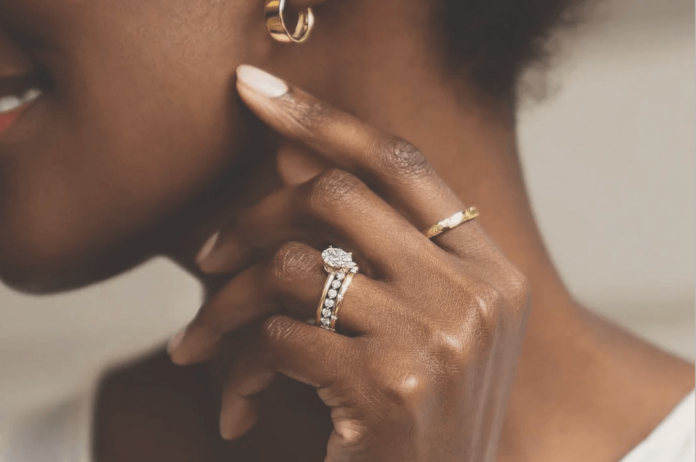When it’s time to buy a diamond engagement ring, here’s how to get it right and how to shop the best in ethical diamonds.
Buying an engagement ring can be overwhelming. There are so many selections and so many price ranges to choose from. And today’s shoppers want something else with their purchase: a commitment to ethical practices, whether that’s responsibly sourced, conflict-free, or lab-grown diamonds and recycled metals. Ethos caught up with several engagement ring experts. Here’s everything they think you need to know about buying ethical engagement rings.
What makes a diamond engagement ring ethical?
Ethical sourcing means a few things, but most often it refers to how the diamond was mined or produced, and who had ownership of the diamond before it was manufactured into jewelry.
“Ethical mining practices include providing safe working conditions and appropriate wages,” says Michael Modugno, S.V.P. of Product Development for Adrianna Papell Diamond Collection. “Ethical ownership refers to whether the diamonds had been previously used to fund illegal activity. All legitimate retailers will offer verification of this from their suppliers.”
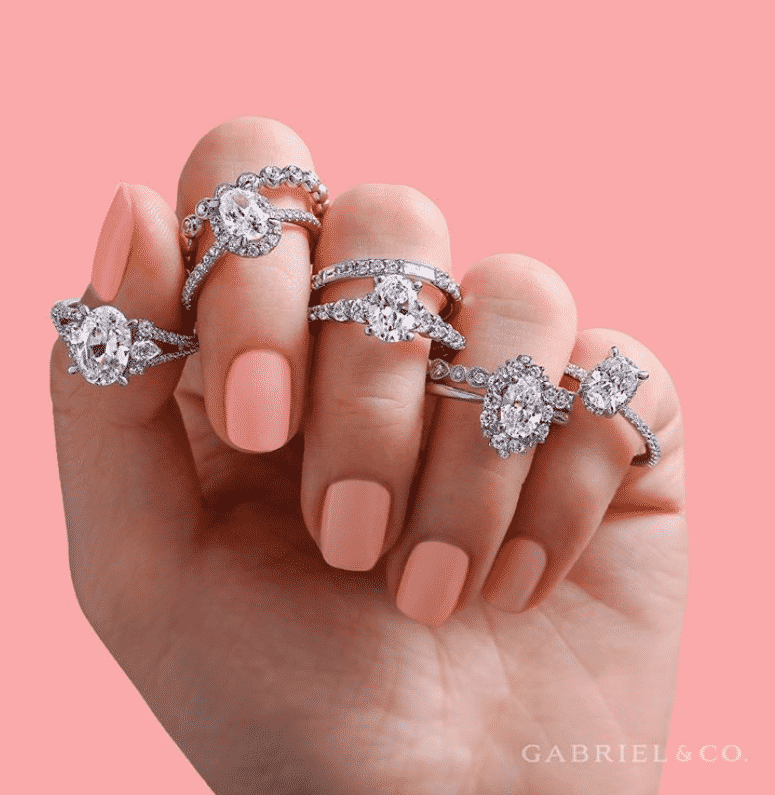
The most ethical engagement rings are the ones passed down through generations — if you’re lucky enough to have one in the family.
But even if there isn’t a family heirloom piece, buying vintage or from a resale platform can be an equally good option, too. Vintage boosts the circular economy, reduces the demand for new products, and can be a more affordable option as well.
Today, consumers can also shop lab-grown diamonds that never came out of a mine. They’re identical to mined diamonds in every way except they’re produced in labs. According to Brilliant Earth, one of the leading lab-grown diamond sellers, lab-grown diamonds are created in environments where technological processes mimic natural conditions to produce the diamonds.
Like mined diamonds, lab-grown diamonds are made of carbon atoms and deliver the same crystal structure. Experts can’t tell them apart.
The Kimberly Process
When shopping for an engagement ring, you’ll likely hear about the Kimberly Process when it comes to mined diamonds. It’s a certification program that was launched in 2003 to prevent conflict diamonds from entering the supply chain. The Kimberly Process helped increase transparency in the diamond industry and was able to reduce the control of rebel groups or their allies used to fund conflicts against legitimate governments. As a result of the coalition between governments, NGOs, and the global diamond industry, conflict diamonds have been drastically reduced. Today, more than 99 percent of the world’s diamonds are conflict-free as a result.

But that doesn’t mean that all mined diamonds are ethical. Recent investigations have found child labor is still rampant in the mining industry. Investigations by the group Swedwatch found that the Kimberly Process was often obscuring human rights abuses in the industry. “The KPCS is outdated and does not cover most human rights abuses linked to diamond extraction today,” Therese Sjöström, a researcher at Swedwatch told Reuters in 2016. Issues are still ongoing. The United Nations declared 2021 the International Year for the Elimination of Child Labor, due in large part to children working in diamond mines to this day.
Buying an ethical diamond engagement ring
But a good jeweler will be able to help answer all questions about ethics and sourcing. “Choosing ethically sourced diamonds shows that the retailer and manufacturer care about the consumer, the workers, the manufacturing facilities, as well as the environment,” says Inna Kushnirski, Bridal Merchandiser at Gabriel & Co.
She says Gabriel & Co is committed to promoting responsible and sustainable practices “so that every consumer who purchases our jewelry can trust that each piece is hand-crafted with love and an artisan flair to perfectly represent the important milestones in each person’s life.”
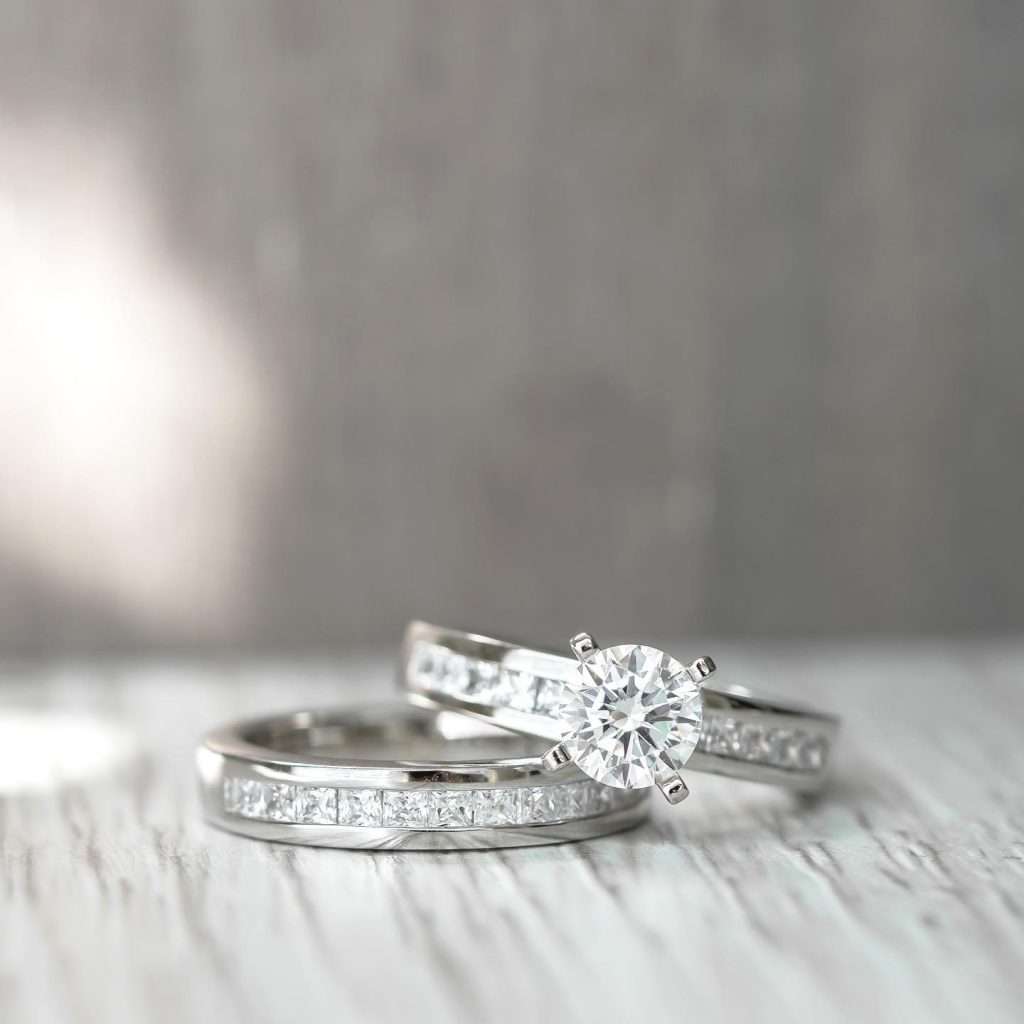
Mahgerefteh says Allurez has been a part of the Kimberley Process since its inception. “[W]e fully believe in ethically sourced, conflict-free diamonds,” he says. “It is imperative for consumers to make sure any company or brand they purchase diamonds from is a member.”
If you’ve found yourself a reputable jeweler, they’ll already be working with ethically sourced diamonds. They will be able to help guide you to making a purchase that matches your values. “Consumers should also look for certificates of authenticity when making diamond purchases, third-party certifications and appraisals,” says Mahgerefteh.
Engagement ring buying tips
First things first. Engagement rings are serious business. This isn’t like buying a Valentine’s Day box of chocolates. So some ring buying tips can help.\
Talk with friends and family
Consulting with friends and family is a great place to start. This gives you a wide range of ideas and options and insight into their style, likes, and dislikes. Another great benefit of talking to your loved ones is getting a feel for the types of rings other couples are purchasing and the styles available. The options are extremely varied, so take your time during the research phase. You’ll also get some ballpark ideas on costs for different metals, gems, and other factors. This will help narrow down your selection and simplify the process.
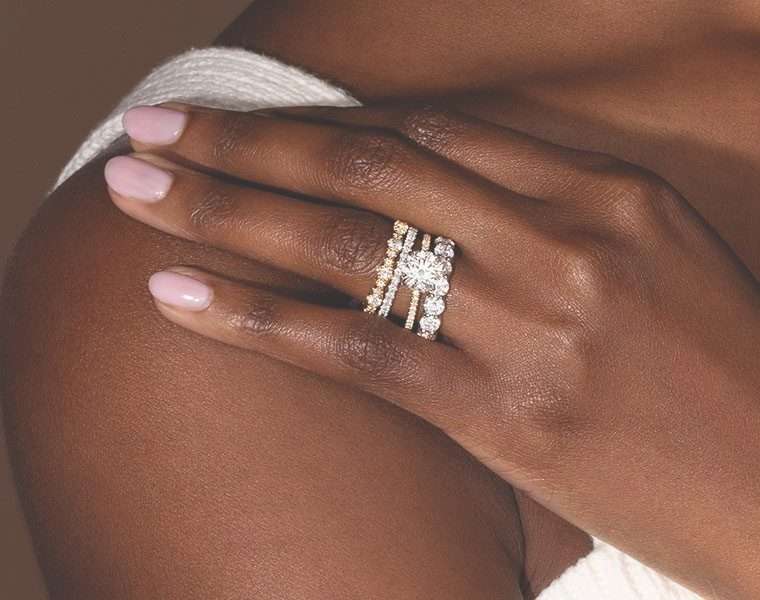
Avoid purchasing based on current trends
While it’s a good idea to pay attention to what’s “in” and “out” when it comes to fashion, it’s important to avoid purchasing your ring based on current trends. While many gemstones make a comeback after being out of style for a while, others are here to stay and will never go out of style. Consider the classics because while a trend might be hot today, it will be out tomorrow, and you don’t want your engagement ring to be outdated or mismatched with their other jewelry.
Narrow down metals and gems
Once you’ve started narrowing down the options based on their style, it’s time to narrow down the metals and gemstones. Gold, silver, platinum, and titanium are perfect for showing off your style and personality. It’s essential to choose a metal that goes with their other jewelry as well. For example, getting a yellow gold engagement ring might not be a good idea if they wear a lot of silver jewelry. You also have to consider your budget when narrowing down the metals. Look for companies specializing in upcycled or recycled metals. Recycled and ethically mined gold is experiencing a surge in demand and a number of brands are responding to the demand.
Get the ring size correct
The last thing you want is to select the perfect ring only to have to get it resized. This can make the whole experience even more stressful, and the ring could cost you more money. You want to make sure the ring is a good fit while also being able to take it on and off when you need to easily. You can use a few tricks to get the ring size correct. First, you can ask your partner to try on a ring they like and get the size from that. Another option is to use a ring sizing tool to find the perfect size.
What about the 4 Cs?
If you’re opting for a diamond then it’s important to know that the quality of these stones is determined by four main factors. These are clarity, cut, color, and finally carat. A diamond that is cut evenly, with the bottom faces at forty-five degrees to one another, will reflect light straight back up through the top. The result? A stone that truly sparkles.
The other metric, carat, refers to the diamond’s apparent size. The carat is equal to two hundred milligrams. The carat is usually measured up to two decimal places, with one-hundredth of a carat being referred to as a ‘point’. So, a quarter of a carat would be twenty-five points.
One thing to bear in mind is that we get big swings in price when a diamond passes beyond a psychologically significant threshold. A one-carat diamond is indistinguishable from a ninety-nine-point one, but the difference in price might be enough that you’re much better off buying the smaller one.
The prevailing advice among many jewelers is that carat is the least important quality. It’s better, in other words, you should shop for a stone that’s as even, clear and colorless as possible before you think about getting something big. Big, dull gems will stand out for the wrong reasons — especially to those with knowledge of gemstones and how they work.
Diamond engagement ring dos and don’ts
“Purchasing an engagement ring is one of the most important decisions of someone’s life,” Raphi Mahgerefteh, founder and CEO of jewelry brand Allurez tells Ethos. There’s pressure to get it right and if you don’t know your future fiancé’s style preferences, that can create some barriers to buying and also disappointment for your fiancé.
Mahgerefteh says the most important factor to consider is your fiancé’s style and taste. “They might like a traditional diamond solitaire ring, they might like a unique blue sapphire and halo ring, a lab-grown infinity ring, or a black diamond ring,” he says.
The overwhelming majority of engagement rings feature at least one gemstone. While diamonds are a traditional and popular choice, you needn’t feel compelled toward them for this reason. You might instead choose a favorite stone purely because you like the look of it, or because of some symbolic or emotional tie that’s personal to your partner, or your relationship. You might even consider using the stone of your partner’s birth month.
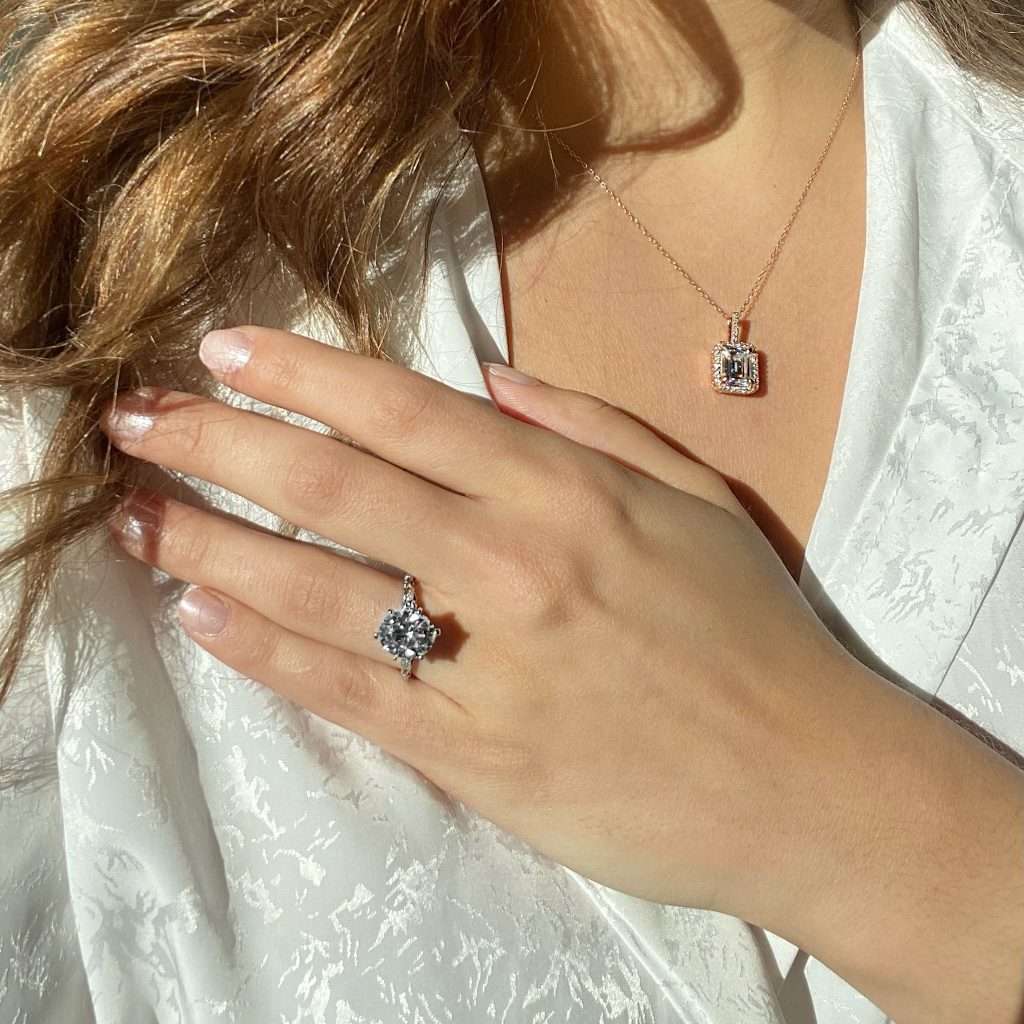
Kushnirski says paying attention to the four Cs of the center diamond is also important (color, clarity, cut, and carat). She says your best bet is purchasing your engagement ring from a trusted jeweler “who will guide you every step of the way.”
That helps to make the process as comfortable and stress-free as possible. In this day and age, a little Google research can help you find a trusted jeweler who stands behind their quality and reputation through warranties and servicing.
Modugno says the most important place to start is by identifying your price range. That will give you more of an accurate picture of your options. He says a vast majority — 96 percent — of women say they want to be involved in the ring selection. Kushnirski agrees. She says the biggest misconception is that one person should do the shopping all on their own. “Ring selection should really be built on the [other person’s] personality and lifestyle, and the budget should reflect what they feel comfortable spending,” she says.
Related on Ethos:

